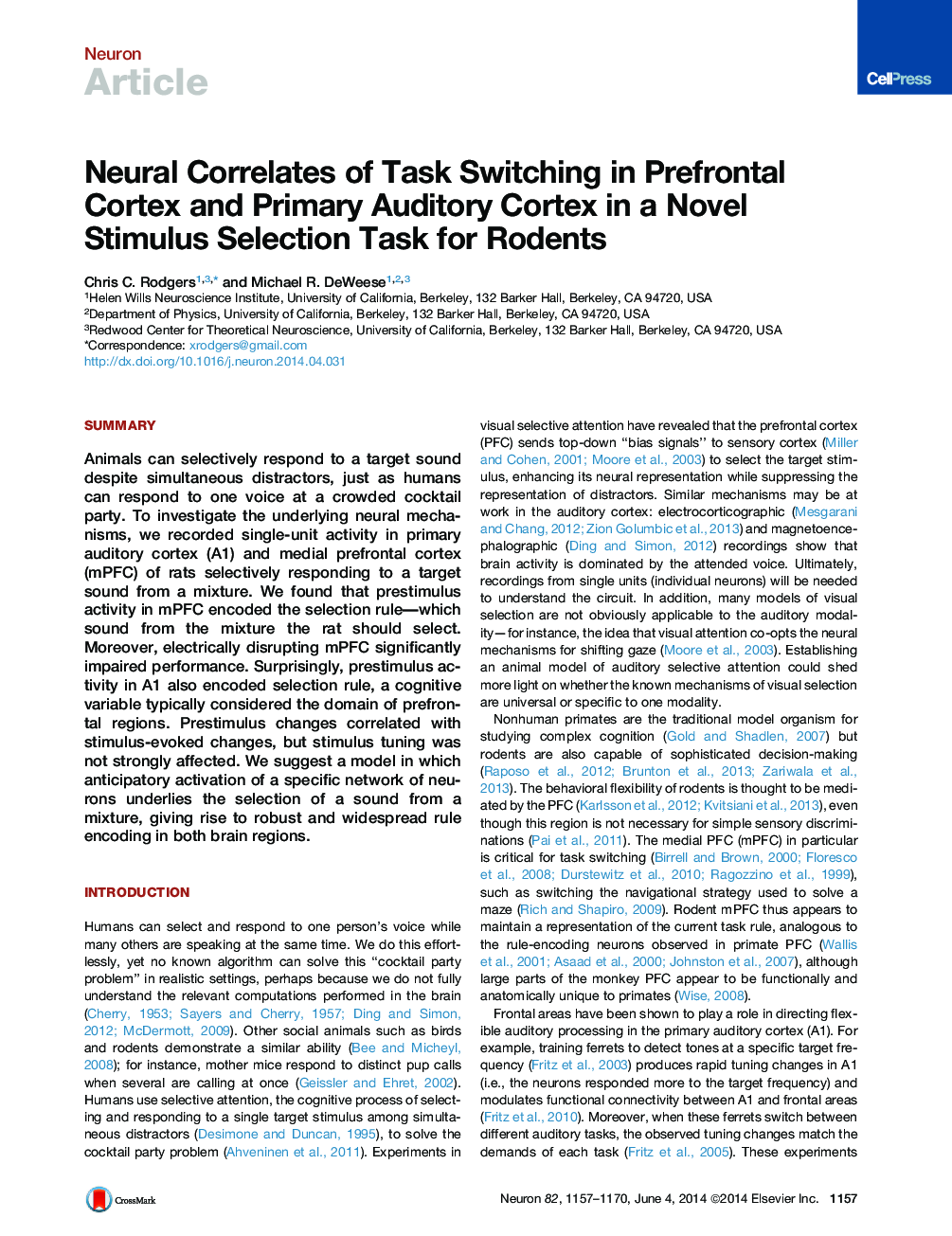| Article ID | Journal | Published Year | Pages | File Type |
|---|---|---|---|---|
| 4321065 | Neuron | 2014 | 14 Pages |
•Rats were trained on a novel auditory stimulus selection task•Prestimulus activity in mPFC and A1 encoded selection rule•Stimulus selection did not strongly alter stimulus tuning in A1•Disruption of mPFC through electrical stimulation impaired task performance
SummaryAnimals can selectively respond to a target sound despite simultaneous distractors, just as humans can respond to one voice at a crowded cocktail party. To investigate the underlying neural mechanisms, we recorded single-unit activity in primary auditory cortex (A1) and medial prefrontal cortex (mPFC) of rats selectively responding to a target sound from a mixture. We found that prestimulus activity in mPFC encoded the selection rule—which sound from the mixture the rat should select. Moreover, electrically disrupting mPFC significantly impaired performance. Surprisingly, prestimulus activity in A1 also encoded selection rule, a cognitive variable typically considered the domain of prefrontal regions. Prestimulus changes correlated with stimulus-evoked changes, but stimulus tuning was not strongly affected. We suggest a model in which anticipatory activation of a specific network of neurons underlies the selection of a sound from a mixture, giving rise to robust and widespread rule encoding in both brain regions.Video Abstract To view the video inline, enable JavaScript on your browser. However, you can download and view the video by clicking on the icon belowHelp with MP4 filesOptionsDownload video (13164 K)
